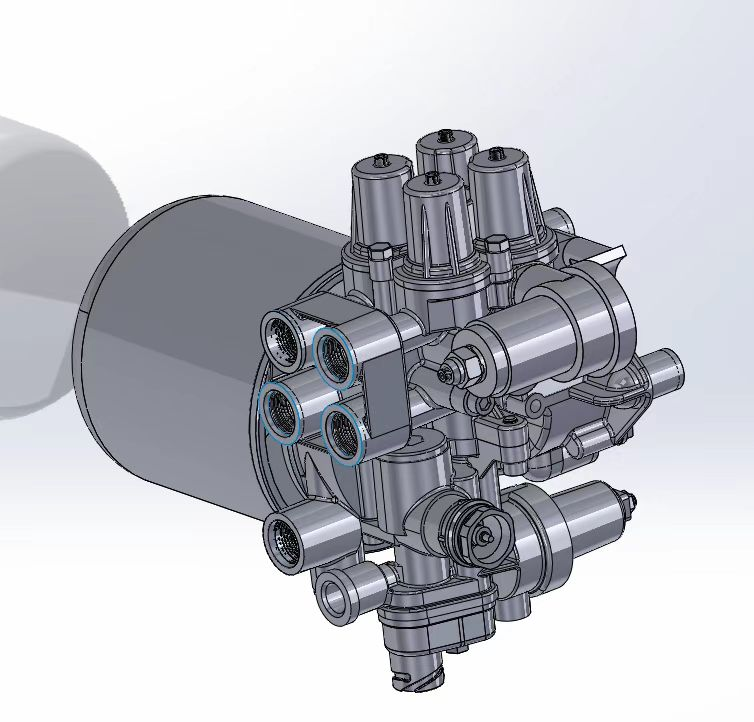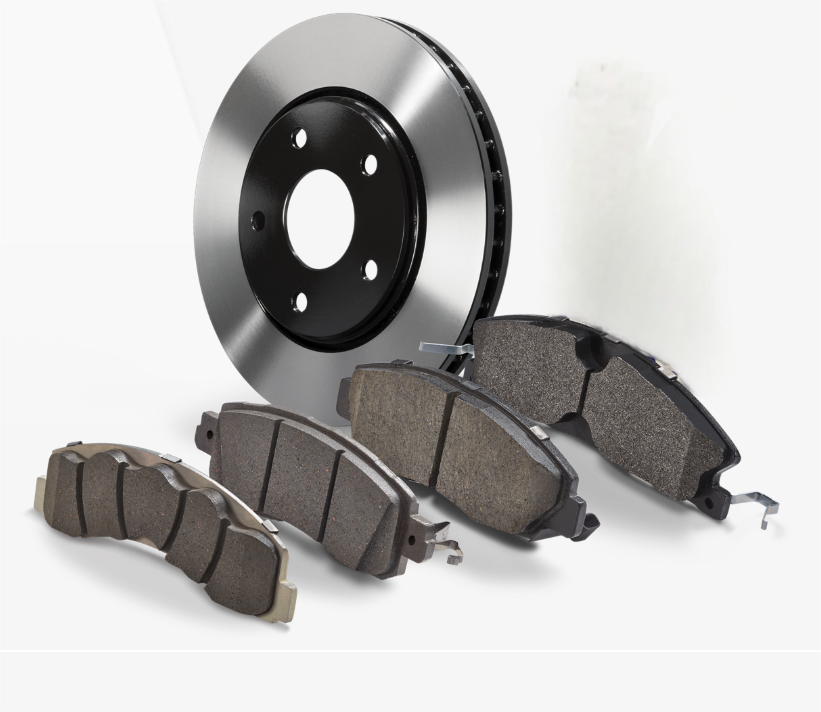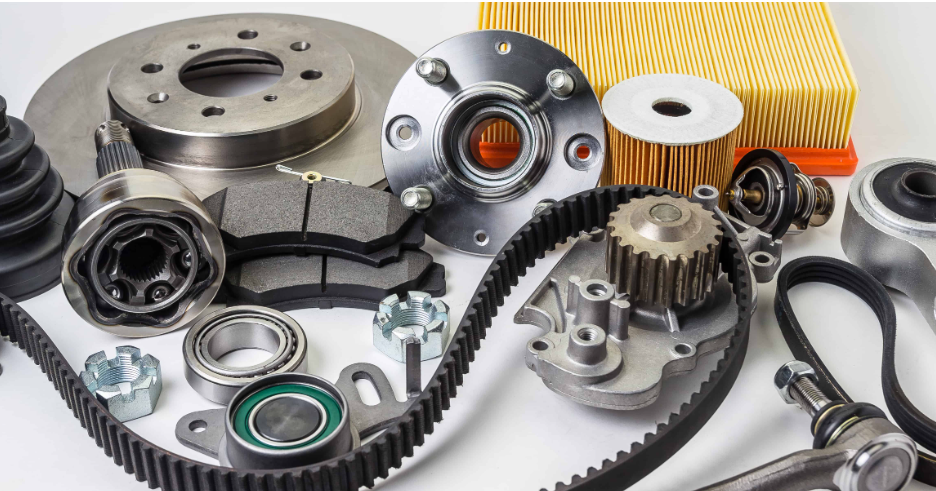លក្ខណៈសំខាន់នៃថ្នាំងប៉ុកដែលមានគុណភាពខ្ពស់
ការត้านทานអាបរមាននិងការចោទពន្លឺ
ការប្រើប្រាស់ចានហ្វ្រាំងដែលមានគុណភាពខ្ពស់នឹងជួយគ្រប់គ្រងកំដៅ ហើយនោះគឺជាអ្វីដែលអ្នកពឹងផ្អែកលើការកាត់បន្ថយបញ្ហាហ្វ្រាំងធ្លាក់ នៅពេលដែលអ្នកចាប់ហ្វ្រាំងយ៉ាងខ្លាំង។ រចនាបថរន្ធដែលអាចឱ្យខ្យល់ចូល និងចេញបានបង្កើតឡើងវិញ នៅផ្នែកខាងក្រោម និងជុំវិញកន្លែងកាន់ និងចានហ្វ្រាំង ដើម្បីធានាថាកំដៅត្រូវបានបញ្ចេញចេញ។ ការគ្រប់គ្រងសីតុណ្ហភាពប្រកបដោយប្រសិទ្ធភាពនៅពេលចាប់ហ្វ្រាំង នឹងធ្វើអោយប្រសើរឡើងនូវប្រព័ន្ធសុវត្ថិភាព និងអាយុកាលប្រើប្រាស់របស់ចានហ្វ្រាំង ដោយការកាត់បន្ថយការខូចទ្រង់ទ្រាយរបស់សម្ភារៈដែលបណ្តាលមកពីសីតុណ្ហភាព។ នេះបញ្ជាក់ពីតម្លៃនៃការប្រើប្រាស់ប៉ែនហ្វ្រាំងដែលមានគុណភាពខ្ពស់ ដែលមានតម្លៃសមរម្យ មានប្រសិទ្ធភាព និងចាំបាច់សម្រាប់ការរក្សាទុកនូវកំលាំងចាប់ហ្វ្រាំងដែលមានសុវត្ថិភាព និងចៃដន្យនៅក្រោមស្ថានភាពដែលមានតម្រូវការខ្ពស់។
ការបិទបែកដែលមានសមត្ថភាព
ដូច្នេះ ថាមពលរបស់ផ្ទាំងកាត់ត្រូវតែនៅក្នុងកម្រិតខ្ពស់នៃសមត្ថភាពក្នុងបរិយាកាសជាច្រើន រួមទាំងភ្លើង និងសណ្ឋូ។ ការបុកដោយអ៊ីលីមិនត្រូវបានគេសង្កេតថាជាកិច្ចសំណង់ដែលសំខាន់សម្រាប់ការរក្សាសមត្ថភាពនេះ។ កិច្ចសំណង់ទាំងនេះ ដូចជា e-coating និងសេរាមិច មានបទบาทក្នុងការព្រមទាននឹងការបំផ្លាញនៃផ្ទាំងកាត់ ដែលជួយបន្ថែមអាយុសម្រាប់ផ្ទាំងកាត់របស់អ្នក។ ស្ថិតិបញ្ជាក់ថាផ្ទាំងកាត់ដែលមានកិច្ចសំណង់ព្រមទាននឹងការបំផ្លាញដោយสนើស អាចមានអាយុប្រើប្រាស់បានយ៉ាងហោចណាស់ 50% វែងជាងនៅក្នុងបរិយាកាសដែលអាចធ្វើអោយមានការបំផ្លាញ ប្រែប្រួលជាមួយនឹងផ្ទាំងកាត់ដែលមិនមានកិច្ចសំណង់ទេ។ ដូច្នេះ វាអាចជាការជ្រើសរើសដែលល្អសម្រាប់ការផ្តល់សមត្ថភាពយឺតយុរ និងស្ថិរភាពសម្រាប់យ៉ាងហោចណាស់ក្នុងការបើកបរតាមរយៈពេលវែង បើប្រសិនបើអ្នកបើកបរក្នុងបរិយាកាសណាមួយក៏ដោយ។
ការសង្គមសម្រាប់លទ្ធផលដែលស្ថិតសម្រាប់
ដោយសារតែន័យសំខាន់របស់ការងាររបស់ថ្នាំងប៉ុកកាត់ ក្នុងការប៉ុកដោយមេគាណ សម្រាប់អោយទាន់តែជាមួយប្រព័ន្ធប៉ុក ចាំបាច់ត้องមានវិស្វកម្មដែលត្រឹមត្រូវ។ វិធីសាស្ត្រ ឧ. ការប្រើលំហ CNC ជួយឲ្យការរក្សាស្ថិតិភាពនៃការងារ និងរក្សាស្ថិតិភាពស្អាតនៅពេលប៉ុក។ មតិរបស់ជំនាញផ្តល់នូវន័យសំខាន់របស់ថ្នាំងប៉ុកដែលត្រឹមត្រូវ ដែលអាចកាត់បន្ថយចម្ងាយការប៉ុកបាន 15% ក៏ដូចជាកំណត់ត្រាដល់ន័យសំខាន់របស់ការអភិវឌ្ឍន៍ប្រព័ន្ធប៉ុកដែលមានលក្ខណៈការងារខ្ពស់ជាមួយវិស្វកម្មដែលត្រឹមត្រូវ។ ការកាត់បន្ថយនេះមិនតែកាត់សម្រាប់ការកើនឡើងនៃសន្តិសុខទេ ប៉ុន្តែក៏ត្រូវបានបញ្ចូលទៅក្នុងសេដ្ឋកិច្ចការផ្លាស់ប្តូរថ្នាំងប៉ុក និងបញ្ចូលទៅក្នុងសេដ្ឋកិច្ចការអនុវត្តន៍របស់utomobiles។ ## សម្ពាធទូទៅនិងសុវត្ថិភាព ការអានមតិយោបល់មុន បានធ្វើឱ្យខ្ញុំគិតថា
G3000 ដែកចម្រុះប្រឆាំងនឹងអាលុយមីញ៉ូម Advanced
ក្នុងផលិតផលថ្នាំងប៉ាន់, ការជ្រើសរើសម៉ាទ្រីយែលគឺជាពិន្ទុធំដែលអាចធ្វើឱ្យប្រសិទ្ធភាពសរុបនៃយានយន្តនិងជីវភាពរបស់ចម្លើយបានច្រើន។ ម៉ាទ្រីយែល G3000 ដែលបានหลើបសម្រាប់សម័យមុនមានសុពលភាពខ្ពស់និងសម្រាប់ប្រតិបត្តិការក្នុងស្ងៀតខ្ពស់។ ប៉ុន្តែម៉ាទ្រីយែលសម័យថ្មីមានសមត្ថភាពការដំណើរការខ្ពស់ជាង, ដូច្នេះទូទៅពួកវាមានទឹកមាសខ្ពស់ជាងនិងមិនឆ្ងាយស្ងៀតដូចម៉ាទ្រីយែលដែលមានទឹកមាសខ្លី។ ម៉ាទ្រីយែលថ្មីទាំងនេះមានសមត្ថភាពសម្រាប់ទឹកមាសនិងសម្រាប់សម្ពាធដែលល្អជាងដូច្នេះអាចធ្វើឱ្យមានសម្ពាធប្រសិទ្ធភាពខ្ពស់ជាងនៅពេលសម្រេចនិងការបញ្ជាក់ទិសដៅ។ ប្រមាណនៃទឹកមាសយានយន្តអាចត្រូវបានកាត់បន្ថយបានប្រហែល 10% ដោយប្រើម៉ាទ្រីយែលថ្មីទាំងនេះ ដែលមានប្រយោជន៍សម្រាប់សម្ពាធផលិតស៊ីអ៊ីលនិងសម្ពាធយានយន្តសរុប។
ឥទ្ធិពលនៃការបញ្ចូលផ្សេងៗនៅលើផ្ទៃ
ការបំពុលដែលមានសមត្ថភាពខ្ពស់មិនផ្អែកតែត្រង់ទៅលើស៊ីលីដែលបានប្រើទេ ប៉ុន្តែផ្ទៃនៃថាមពលបំពុលផងដែរ។ ការបញ្ចូលផ្ទៃថាមពលបំពុលជាលក្ខណៈ cross-ground អនុញ្ញាតឱ្យផ្ទះបំពុលចាប់យកទៅនឹងថាមពលបំពុលជាមួយពេលវេលាអនុវត្តដែលត្រូវការតិច។ លក្ខណៈនេះធ្វើអោយការបំពុលបន្ថែមឡើងយ៉ាងច្រើននៅពេលដែលមានភាពបំផុត ជួយការពិតប្រាកដការឆ្លងកាត់ពេលវេលានិងកាត់បន្ថយសំឡេងបំពុល។ ការធ្វើតេស្តលទ្ធផលនៃការប្រតិបត្តិការយានយន្តបានបង្ហាញថាផ្ទៃ cross-ground អាចបន្ថែមភាពយึดចំណុចដំបូងបានច្រើនជាង 25% ដែលធ្វើឱ្យលក្ខណៈនេះសំខាន់សម្រាប់ការបំពុលដែលមានសមត្ថភាពខ្ពស់។ វាជាសំណើសំខាន់បំផុតប្រសិនបើអ្នកចង់មានការបំពុលដែលមានភាពស្អាតនិងឆ្លុះបញ្ចូល។
អាជីវកម្មយូរស៊ី
នៅពេលដែលចាប់អំពីការត้านทานម៉ាស៊ីនប្រយ័ត្នខ្ពស់ ដូចជា ក្នុងរថយន្តទេសចរណ៍ និងការប្រកួតប្រជែង វាជាสំណើសម្រាប់ទទួលបានផ្ទាំងដែលមានកម្លាំងត้านทานខ្ពស់។ ការប្រើប្រាស់ទាំងនេះត្រូវការផ្ទាំងទាំងនោះដើម្បីមានកម្លាំងធ្មេញខ្ពស់ និងត្រូវការផ្ទុកទឹកមិនបានបែកចំណុចតូច ហើយដូច្នេះត្រូវការសំណុំដែលមានលក្ខណៈទាំងនេះ។ ក្រុមហ៊ុនផ្ទាំងប៊េកស្គាល់ថាផ្ទាំងប៊េកសម្រាប់ការប្រើប្រាស់ធំគឺត្រូវបានប្រើចំពោះចាប់ពី 60,000 ម៉ាយឡើងមុនពេលដែលត្រូវបានប្តូរ។ ការរស់នៅយូរនេះគឺសំខាន់ណាស់សម្រាប់អ្នកស្រលាញ់លទ្ធផល ឬអ្នកម្ចាស់ការយន្តដែលអ្នកអាចសម្រេចចិត្តប្រើប្រាស់ម៉ាស៊ីនរបស់អ្នកដោយមិនត្រូវការងាយស្រូបថាការប្រើប្រាស់នឹងរស់នៅនៅពេលដែលអ្នកត្រូវការវា។ ##លទ្ធផលក្នុងស្ថានភាពបំផុត
ការគ្រប់គ្រងស្ថានភាពប៉េកលឿងលឿង
ដុំប្រកួតត្រូវបានធ្វើការយ៉ាងសមរម្យនិងអាចទាន់ពេលបាន (ហើយត្រូវការក្រាបគ្រប់គ្រាន់) ដើម្បីអោយអាចចាប់យកយ៉ាងខ្លាំងនៅក្នុងការប្រកួតលឿន។ ក្នុងពេលប្រកួតចំណុចខ្ពស់ ដុំប្រកួតអាចធ្វើអោយស្ទើរស្ទាត់បាន ដែលនាំអោយមានភាពខ្សោយ។ ប៉ុន្តែ នៅពេលនេះ ដុំប្រកួតថ្មីៗក៏មានរูបំណែក ឬផ្សាយ ដែលជួយការស្ទើរស្ទាត់យ៉ាងសំខាន់។ ការស្ទើរស្ទាត់នេះមិនតែជួយការព្រមទាន់នៃដុំប្រកួតទេ ប៉ុន្តែនៅពេលដុំប្រកួតស្ទើរស្ទាត់ វាអាចបញ្ឈប់ភាពខ្សោយ ដែលជាការចាប់យកមិនមេត្រឹត្រាតនៅពេលដុំប្រកួតត្រជាក់។ ទិន្នន័យពិសេសពីការធ្វើតេស្តលើផ្លូវបញ្ជាក់ថា ដុំប្រកួតដែលត្រូវបានiết kếយ៉ាងត្រឹមត្រូវអាចរក្សាផលប្រកួតបានក្នុងការប្រើប្រាស់យ៉ាងឆាប់រហ័សសំរាប់ពេលវេលាដែលបន្តបន្ទាប់; ដូច្នេះ អ្នកបើកឡានអាចមានសមត្ថភាពពេញលេញនៅក្នុងប្រព័ន្ធប្រកួតរបស់ពួកគេនៅពេលដែលស្ថានភាពធ្វើអោយមានភាពខ្លាំង។
ការកាត់បន្ថយការបំផ្លិចខ្សែនៅក្នុងរថយន្តមួយ និងការដក
ភាពខ្សោយរបស់ប្រកួតដូចនេះជាបញ្ហាចម្លងសម្រាប់ថុកទឹក គ្រីមួយ និងអ្វីមួយដែលដូចគ្នា ដែលការប្រើប្រាស់ជាធម្មតាអាចធ្វើឱ្យមានការកើនឡើងនៃស្ទូទ័រនៅផ្នែកប្រកួត ដែលនាំឱ្យមានការចាត់ចេញពីការប្រើប្រាស់ប្រកួត។ ដើម្បីកាត់បន្ថយបញ្ហានេះ រាងថាសដែលប្រើប្រាស់ដោយសំណើសម្រាប់ថាសនេះប្រើស្តុកថាមពលខ្ពស់ដើម្បីការបំផ្លាញថាសដោយមិនបានបញ្ចប់សម្ពាធភាពប្រកួតទេ។ បន្ថែមទៀត វិទ្យាសាស្ត្រការបញ្ចូលស្រាលមួយចុងក្រោយបន្ថែមការគ្រប់គ្រងថាមពល។ លេខសម្រាប់ថ្មីបង្ហាញថាភាពខ្សោយប្រកួតអាចតូចជាង 40% ក្នុងស្ថានភាពភាគហ៊ុនធីប្រសិនបើអ្នកប្រើប្រាស់ថាសប្រកួតល្អបំផុត។ ការអភិវឌ្ឍន៍ទាំងនេះដូច្នេះត្រូវបានធ្វើឡើងដើម្បីធានាថាការប្រើប្រាស់ប្រកួតនៅតែសម្រាប់សម្រាប់ស្ថានភាពធ្ងន់ធ្ងរ អតិថិជនសុវត្ថិភាពអតិបរមាផ្ទាល់ទៅសម្រាប់ការប្រើប្រាស់ភាគហ៊ុនធី។
សមត្ថភាពសម្រាប់ប្រើជាមួយប្រើងប៊ូស្តការងារខ្ពស់
ប៊ូការពីលក្ខណៈមួយនៃផ្ទាំងស្ករដែលមានគុណភាពខ្ពស់ត្រូវបានប្រើជាមួយនឹងប៊ូស្ករដែលមានលទ្ធផលខ្ពស់ដើម្បីទទួលបានលទ្ធផលអតិសញ្ញាណនិងការចំណាយ។ ការប្រមូលរវាងផ្ទាំងស្ករនិងប៊ូត្រូវបានធ្វើឡើងដើម្បីទទួលបានមេគុណប៉ូលីស្ថិតិអតិសញ្ញាណសម្រាប់ការប៊ូដែលមានលទ្ធផលខ្ពស់ជាងនឹងការចំណាយតិចជាង។ ការស្រាវជ្រាវបានបង្ហាញថាចំណុចដែលមិនត្រឹមត្រូវរវាងផ្ទាំងស្ករនិងប៊ូអាចធ្វើឱ្យមានការចំណាយមុនពេលសម្រាប់ទាំងផ្ទាំងស្ករនិងប៊ូ ដែលបង្ហាញថាអ្នកត្រូវតែប្រើផ្ទាំងស្ករនិងប៊ូពីអ្នកផ្តល់សេវាកម្មដែលមានជំនាញនៅពេលដែលតែងតាំងប្រព័ន្ធប៊ូ។ ដូច្នេះ វាជាការសំខាន់សម្រាប់អ្នកម្ចាស់រថយន្តនិងអ្នកផ្តល់សេវាកម្មដើម្បីពិจារณาការស្មើគ្នារវាងប្រព័ន្ធប៊ូដើម្បីធ្វើឱ្យមានសន្តិសុខនិងលទ្ធផលប៊ូអតិសញ្ញាណ និងការចំណាយសរុបរបស់ប្រព័ន្ធប៊ូ រួមទាំងការរស់នៅរយៈពេលនៃប៊ូសម្រាប់ការបើកបរដែលមានលទ្ធផលខ្ពស់និងស្ថានភាពបើកបរដែលមានសមត្ថភាពខ្ពស់។ ## លក្ខណៈនៃការចំណាយនិងសេវារបស់ផ្ទាំងស្ករ
របៀបពិនិត្យការស្រូបដែសប៉ុកលេខា
ធានីតែងថ្លៃនិងសម្រេចបំផុតក្នុងការបំណាក់ជាមួយឧបករណ์ពិនិត្ហទំហំថាសដោយស៊ូវ។ ការលាប់ថាសជាពិន្ទុសំខាន់មួយដែលត្រូវតែតាមដាន: ធ្វើឱ្យជាភាពយ៉ាងតិចតែត្រូវធ្វើឲ្យថាសរបស់អ្នកស្ថិតនៅក្នុងប្រភេទទំហំដែលកំណត់ដោយអ្នកផលิต។ វិធីល្អបំផុតសម្រាប់វัดនេះគឺដោយប្រើ calipers ។ OEM គួរតែផ្តល់ទំហំអប្បបរមានិងនេះគឺជាកន្លែងដែលថាសគួរតែត្រូវបានប្តូរ។ ការពិនិត្ហទំហំថាសរបស់អ្នកប្រចាំពេលអាចជួយអោយឆ្លងកាត់បញ្ហាក្រោយពីរបៀបនេះ និងធ្វើឲ្យជីវិតនៃថាសនិងប៉ាតសម្រាប់ការបំណាក់បានប្រើប្រាស់យឺតិចបំផុត ដែលជាកិច្ចសំខាន់សម្រាប់សុវត្ថិភាពរថយន្ត។
ការស្គាល់រ่องនិងការបំផ្លាញ
ស្លឹកដែលត្រូវបានចំណាយគឺត្រូវបង្ហាញថា ការបំផ្ទុះអាចមិនធ្វើការបានប្រសើរ។ ការទ្រេតខូចខាតដែលអាចមើលឃើញបានតាមការពិនិត្យយ៉ាងទស្សនភាព; អាចមានការរីករាយតូចៗនៅពេលបំផ្ទុះ ក៏ជាអោយសញ្ញាបែបដូចគ្នាដែលបង្ហាញថាអ្នកត្រូវធ្វើការសំរេចសម្រួលពីឆាប់នេះ។ ប្រសិនបើបញ្ហានេះត្រូវបានបន្ថែមឡើង វាអាចបង្កើតស្ថានភាពបើកបរទៅលើសម្រាប់ការបើកបរ និងការซ៊ីម្ម័រថេរ។ ដោយធ្វើការសំរេចសម្រួលសម្រាប់អំបិលយ៉ាងត្រឹមត្រូវ វាអាចស្គាល់បានស្លឹកនិងការទ្រេតខូចខាតនៅពេលមុន ហើយធ្វើការសំរេចសម្រួលយ៉ាងត្រឹមត្រូវដើម្បីរក្សាសុវត្ថិភាពលើផ្លូវ។
សំឡេងបង្ហាញនិងការវិភាគសំឡេង
សំឡេងដែលមិនទាន់ត្រឹមត្រូវជាធម្មតា ដូចជា សំឡេងរ៉ាកឃើញឬសំឡេងបំផ្លាញពេលដែលបំណាក់គឺជាប្រភេទសញ្ញាទីបំផុតនៃបញ្ហាក្នុងការបំណាក់ថាមពល ហើយត្រូវបានแก้ไขដោយឆាប់បំផុត។ ដូចគ្នានេះ ការពិនិត្យស្វ័យប្រវត្តិនៅពេលបំណាក់អាចធ្វើឱ្យមានបញ្ហាដូចជា សមាមាត្រថាមពល (ឬមិនសមាមាត្រ) និងកំហុសដែលបង្ហាញដោយស្មើគ្នា — ដែលជាបញ្ហាអាស្រ័យសម្រាប់សន្តិសុខ។ សកម្មភាពដែលត្រូវការ: គួរតែស្នើសុំអ្នកបំណុលមือទេសចំណាយជំនាញដើម្បីជួយអ្នកនៅក្នុងការធ្វើការធ្វើតេស្តអំណាចដើម្បីប៉ាន់ស្មានលំនាំដែលបានប្រើប្រាស់ និងការពារជីវិតនៅសល់នៃថាមពលបំណាក់របស់អ្នក។ វិធីសាស្ត្រការពារនេះមានន័យថាអ្នកអាចព្រមទាន់នឹងការប្រើប្រាស់ច្រើនពេក និងរក្សាស៊ីស្ថាមបំណាក់ទាំងមូលរបស់អ្នកឲ្យស្រស់ស្អាត។ ## ការជ្រើសរើសថាមពលបំណាក់ល្អបំផុតសម្រាប់សន្តិសុខ
ផ្ទៃផ្ទាំងត្រូវតែត្រឹមត្រូវនឹងប្រភេទរថយន្ត (Trucks, EVs ជាដើម)
ដើម្បីទទួលបានផ្ទាំងកាត់ដែលត្រឹមត្រូវសម្រាប់រថយន្តរបស់អ្នក អ្នកត្រូវយល់ដឹងជាលំដាប់ដំបូងថាអ្វីដែលរថយន្តរបស់អ្នកត្រូវការពីមុខងារន้ำหนักនិងលក្ខណៈការប្រើប្រាស់។ គឺត្រូវចង់ចាំថាអាក្រក់ត្រូវការផ្ទាំងកាត់ដែលមានភាពរឹងមាំទៅជាងដើម្បីគ្រប់គ្រងន้ำหนักបន្ថែម។ ប៉ុន្តែផ្ទុយទៅ ស៊ីលីមីតូនៅតែមានទំនាក់ទំនងសម្រាប់រថយន្តអេឡិចត្រីក (EV) ដើម្បីការធ្វើដំណើរបន្ថែម។ យល់ដឹងអំពីភាពខុសគ្នានេះគឺសំខាន់នៅពេលដែលត្រូវជ្រើសរើសផ្ទាំងកាត់ដែលល្អបំផុត។ អ្នកជំនាញនៅក្នុងវិស័យនេះសូមណែនាំជម្រើសផ្ទាល់តាមដែលត្រូវការសម្រាប់បំណងនិងប្រភេទរថយន្តផ្សេងៗ ដែលមិនតែផ្តល់ការពារប៉ុណ្ណោះទេ ប៉ុន្តែទទួលបានលទ្ធផលបំផុតពីរថយន្តរបស់អ្នកផងដែរ។
ការតុល្យភាពចំណាយ និងគុណភាពក្នុងការជំនួស
ទោះបីជាវាអាចដូចជាកម្មវិធីដែលមានថ្លៃថយដើម្បីទទួលបានផ្ទាំងកាត់ថ្លៃถูกក្នុងពេលសម្រេច វាមិនមែនជាពិតគ្រប់ពេលទេ ព្រោះផ្ទាំងកាត់ទាំងនេះអាចត្រូវបានផលិតដោយវិធីកាត់ខ្សែរដែលបញ្ចូលទៅលើគុណភាពនិងសន្តិសុខជាច្រើនឆ្នាំទៀតទៀត។ ទោះបីជាផ្ទាំងកាត់មានគុណភាពជាងគេ វាគឺជាការចូលរួមដែលល្អ។ វាអាចរក្សាថ្លៃថយដោយការកាត់បន្ថយការសម្រេច និងការបំផ្លាញទៅលើផ្នែកផ្សេងទៀតនៃយន្តហោះ។ គុណភាពគឺសំខាន់ – ការស្រាវជ្រាវបានបង្ហាញថាដោយការចំណាយបន្ថែមតែប៉ុន្តែប៉ុន្មានដើម្បីទទួលបានផ្ទាំងកាត់មានគុណភាព អ្នកអាចរក្សាថ្លៃថយដល់ 33% នៃថ្លៃសំរេចសរុប។ គុណភាពប្រសើរឡើង ហើយទោះបីជាវាមានថ្លៃខ្ពស់ជាងនៅពេលដំបូង វាមានការធានាសិទ្ធិថាមានសុវត្ថិភាពនិងសម្រាប់ការប្រើប្រាស់ដែលមិនមានបញ្ហាទេ។
សំខាន់នៃស្តង់ដារ OEM និងការបញ្ជាក់
ការផ្គូផ្គងថ្នាំងប៊ុរសទៅជាមួយនឹងស្តង់ដារអ្នកផលិតម៉ាស៊ីនដើម (OEM) គឺជាការសំខាន់ដើម្បីធ្វើឱ្យពិតប្រាកដថាពិន្ទុនិងភាពត្រូវទុកចិត្ត។ ការអនុម័តពី OEM ធានាថាថ្នាំងប៊ុរសត្រូវបានធ្វើតេស្តយ៉ាងទូលំទូលាយ ហើយផលិតសេចក្តីណែនាំពិតមួយសម្រាប់គុណភាពនិងពិន្ទុនៃថ្នាំងប៊ុរសសម្រាប់ផ្នែកបន្ទាប់នៃutomotive ដែលបង្កើនសន្តិសុខនិងភាពស្អាតចិត្ត។ ការស្រាវជ្រាវបង្ហាញថាអាឡោកឡាចដែលមានផ្នែកដែលបានបញ្ជាក់ពី OEM មានបញ្ហាដែលតិចជាងយ៉ាងច្រើនក្នុងជីវិតរបស់ពួកគេជាងអាឡោកឡាចដែលមិនមានការបញ្ជាក់នេះ។ ជាមួយនឹងគុណភាពដែលបានបញ្ជាក់ ផ្នែកដែលបានបញ្ជាក់គឺជាឧទាហរណ៍ដែលត្រឹមត្រូវសម្រាប់រក្សាអ៊ុតុយម៉ូទូរបស់អ្នកឲ្យស្ថិតនៅក្នុងស្ថានភាពល្អបំផុតយ៉ាងយาวนานដល់ពេលដែលអ្នកមានវា។
ទំព័រ ដើម
-
លក្ខណៈសំខាន់នៃថ្នាំងប៉ុកដែលមានគុណភាពខ្ពស់
- ការត้านทานអាបរមាននិងការចោទពន្លឺ
- ការបិទបែកដែលមានសមត្ថភាព
- ការសង្គមសម្រាប់លទ្ធផលដែលស្ថិតសម្រាប់
- G3000 ដែកចម្រុះប្រឆាំងនឹងអាលុយមីញ៉ូម Advanced
- ឥទ្ធិពលនៃការបញ្ចូលផ្សេងៗនៅលើផ្ទៃ
- អាជីវកម្មយូរស៊ី
- ការគ្រប់គ្រងស្ថានភាពប៉េកលឿងលឿង
- ការកាត់បន្ថយការបំផ្លិចខ្សែនៅក្នុងរថយន្តមួយ និងការដក
- សមត្ថភាពសម្រាប់ប្រើជាមួយប្រើងប៊ូស្តការងារខ្ពស់
- របៀបពិនិត្យការស្រូបដែសប៉ុកលេខា
- ការស្គាល់រ่องនិងការបំផ្លាញ
- សំឡេងបង្ហាញនិងការវិភាគសំឡេង
- ផ្ទៃផ្ទាំងត្រូវតែត្រឹមត្រូវនឹងប្រភេទរថយន្ត (Trucks, EVs ជាដើម)
- ការតុល្យភាពចំណាយ និងគុណភាពក្នុងការជំនួស
- សំខាន់នៃស្តង់ដារ OEM និងការបញ្ជាក់







